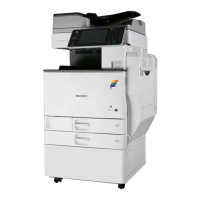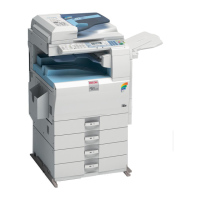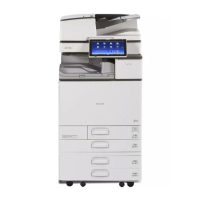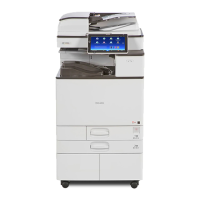IMAGE TRANSFER AND PAPER SEPARATION 20 June 2005
6-84
6.14.2 BELT DRIVE MECHANISM
After the main motor switches on during
copying, the transfer belt contact clutch [A]
switches on after a specified interval and
the cam [F] makes a half-turn to raise the
contact lever [E] and bring the transfer belt
[D] into contact with the drum.
The actuator [C], on the same axis as the
cam, and the transfer belt position sensor
[B] detect whether the drum and transfer
belt are in contact.
When the main motor is off, or when the ID
sensor pattern is being measured, the
transfer belt unit separates from the drum.
The ID sensor pattern must not be transferred to the belt. Also, the transfer belt
and drum must not remain in contact for too long, to prevent contamination of the
drum with oil or other foreign material from the transfer belt.
6.14.3 TRANSFER BELT UNIT CONTACT MECHANISM
The belt contact and release mechanism
consists of the belt contact clutch [A], cam
[B], and contact lever [C]. The belt contact
clutch turns on and the cam attached to
the clutch rotates half a complete rotation.
The contact lever, riding on the cam, is
lifted up and the springs [D] push the belt
into contact with the drum.
The transfer belt position sensor [E]
detects the home position of the cam (this
is when the belt is away from the drum).
The belt must be released from the drum
between copy jobs in order to prevent the
ID sensor pattern from being rubbed off
and to prevent contamination of the drum
from the surface of the belt.
B195D968.WMF
B195D969.WMF
[A]
[B]
[C]
[D]
[E]
[F]
[A]
[B]
[C]
[E]
[D]

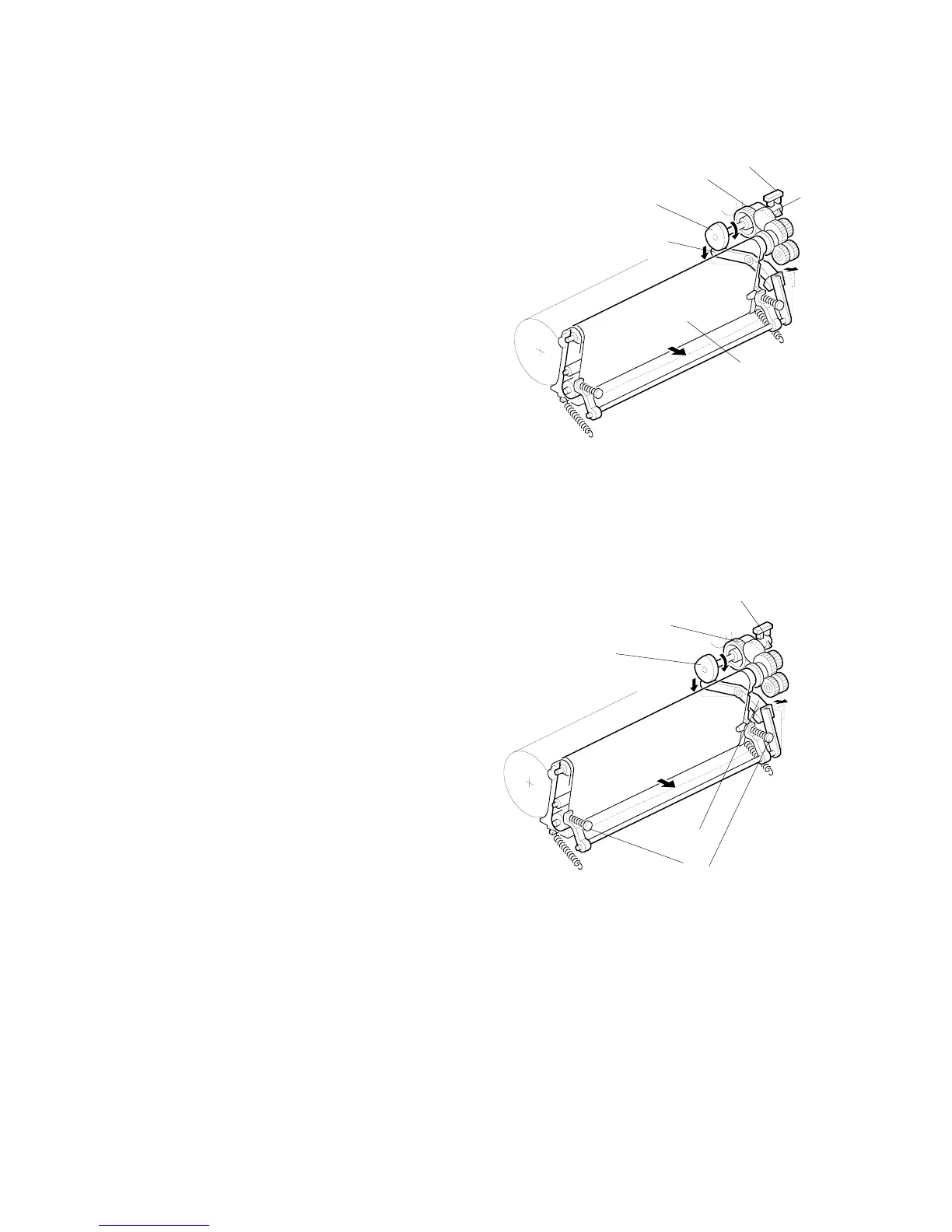